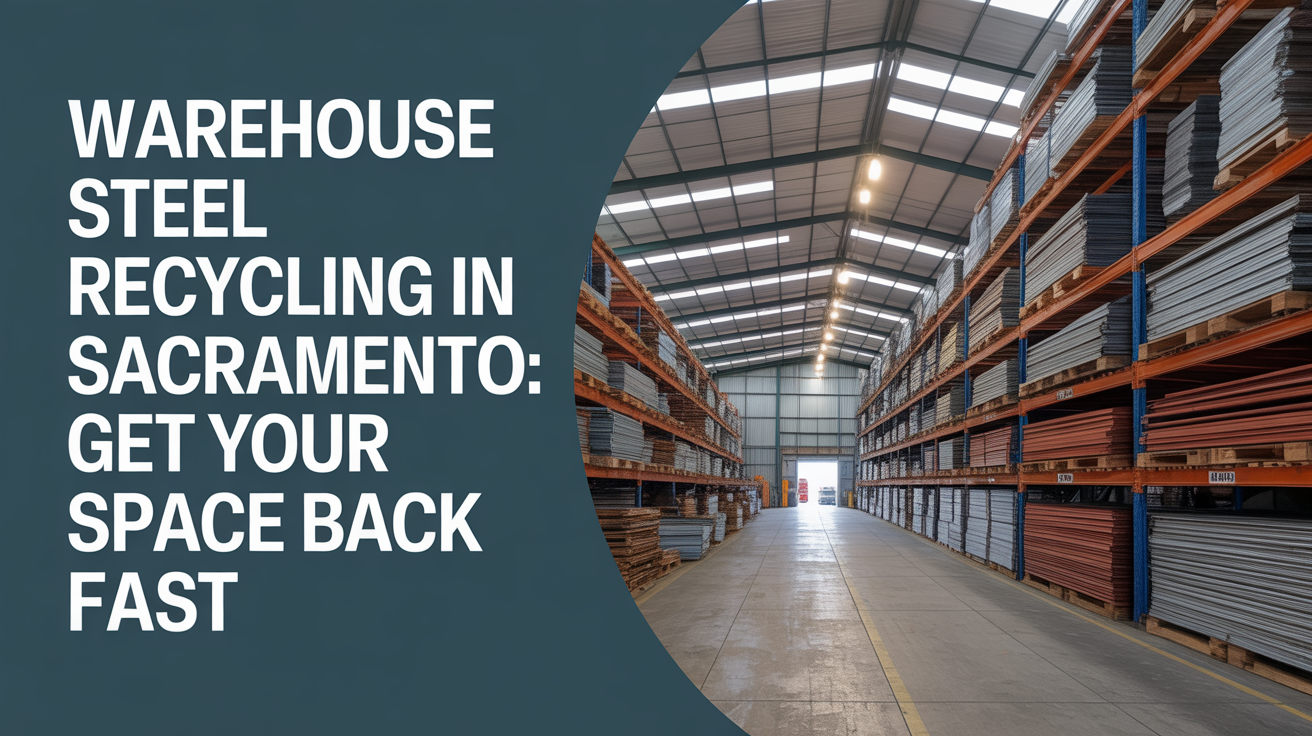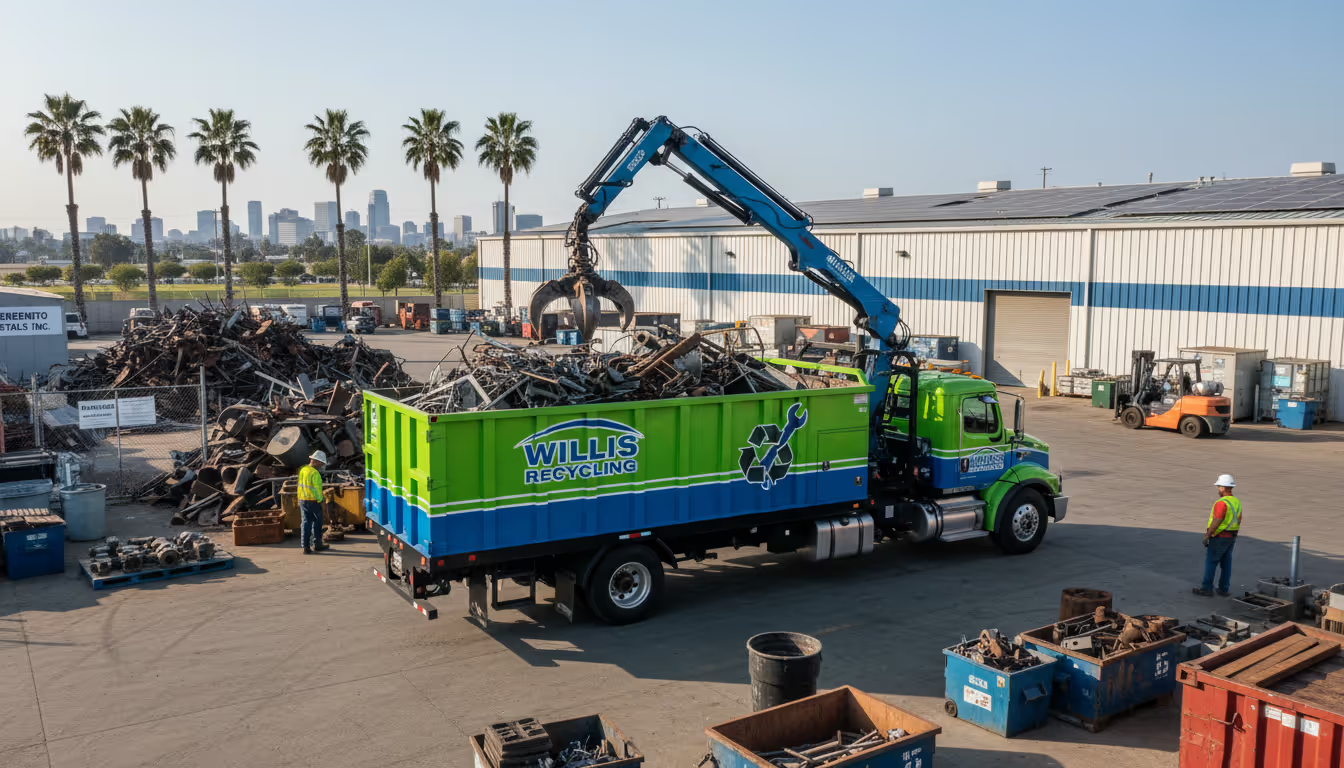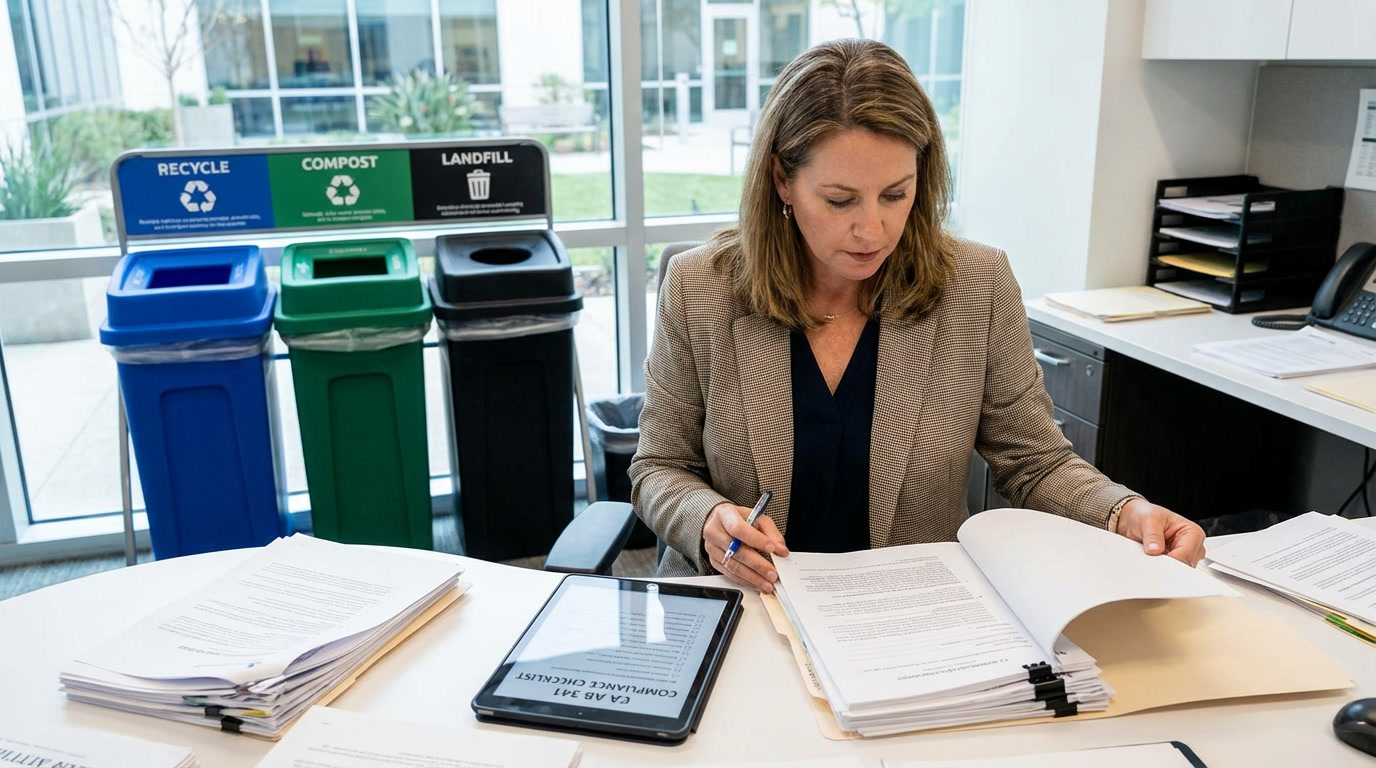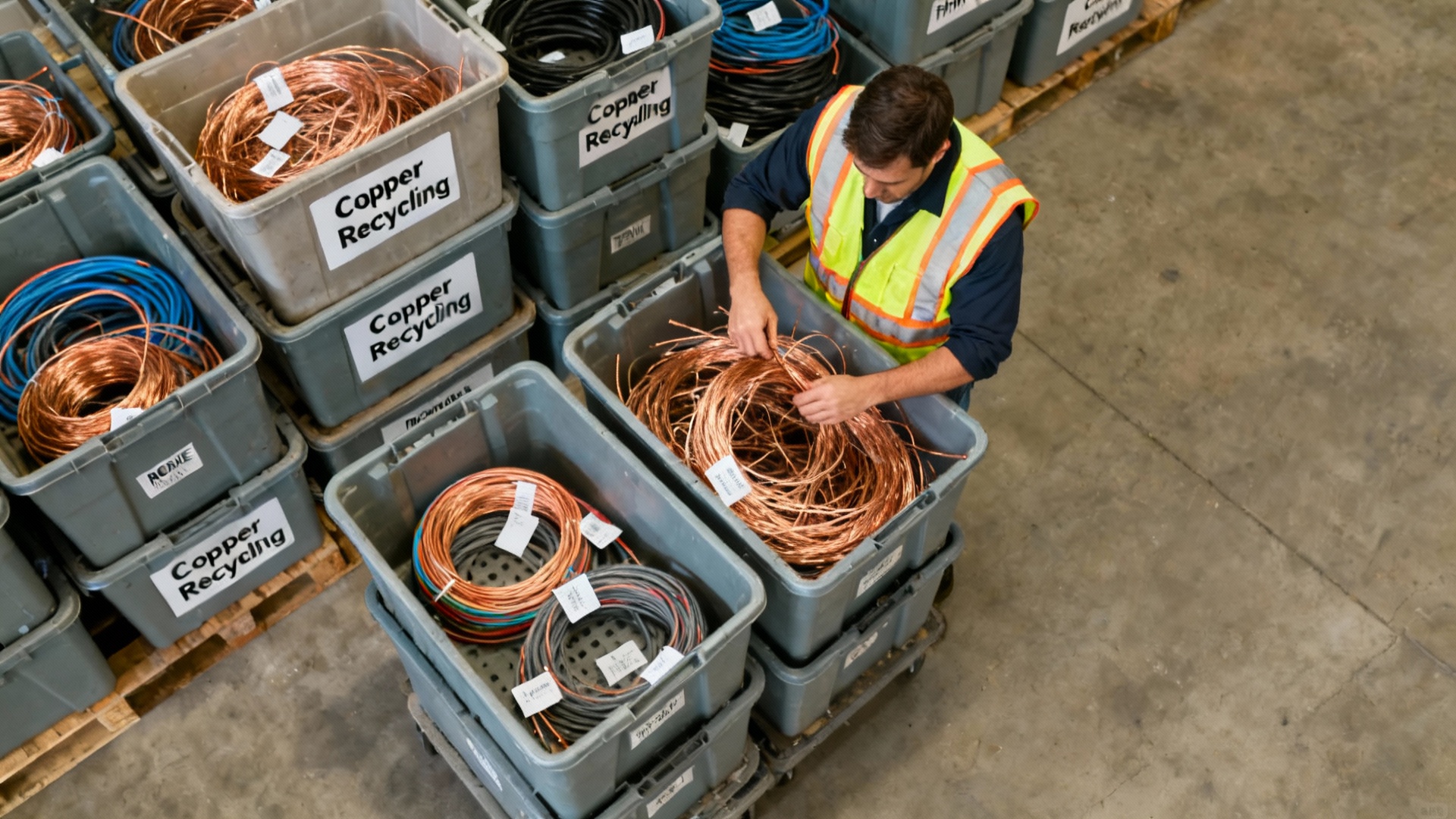If you're staring at rows of old pallet racking eating up warehouse space, you know the frustration. That steel isn't doing you any favors sitting there. Many facilities facing this issue end up looking for warehouse steel recycling Sacramento services to clear out unused systems.
Here's the thing about warehouse racking removal in Sacramento—it's not something you want your regular crew tackling. We're talking about multi-ton structures that need proper dismantling. One wrong move and you've got safety issues, potential injuries, or worse.
Willis Recycling handles warehouse steel recycling in Sacramento the right way, and for businesses specifically looking for warehouse steel recycling Sacramento services, our team delivers compliant, efficient solutions. We bring OSHA-certified crews to your facility, safely remove everything from pallet racks to cantilever systems, and make sure you're compliant with California's recycling laws. Plus, you get fair value for your scrap steel. This makes warehouse steel recycling Sacramento not only safe but cost-effective.
Most projects? Done in a week or less.
Why Professional Removal Matters (More Than You Think)
Operations managers sometimes ask why they can't just have their warehouse team handle old racking removal. Fair question.
The answer comes down to two things: safety and liability—two major reasons why warehouse steel recycling Sacramento professionals are needed.
OSHA doesn't mess around with warehouse racking violations. According to their enforcement data, improper installation or removal can trigger fines from $16,000 for a first offense up to $161,000 for repeat violations [1]. And that's just the fine—not counting potential injuries or workers' comp claims if something goes wrong.
Then there's the California angle. Under state law, warehouse racking components are recyclable commercial waste requiring proper handling [2]. If you dump them illegally? You're looking at penalties up to $10,000 per incident [3]. Some Sacramento operations managers have learned this the hard way, which is why warehouse steel recycling Sacramento services have become essential.
Here's what actually happens when racking comes down wrong: beams fall, uprights tip, someone gets hurt. The whole system is engineered to stand up under load, but it comes apart in a specific sequence. Skip that sequence and physics takes over.
Not worth the risk.
What Kind of Steel We're Talking About
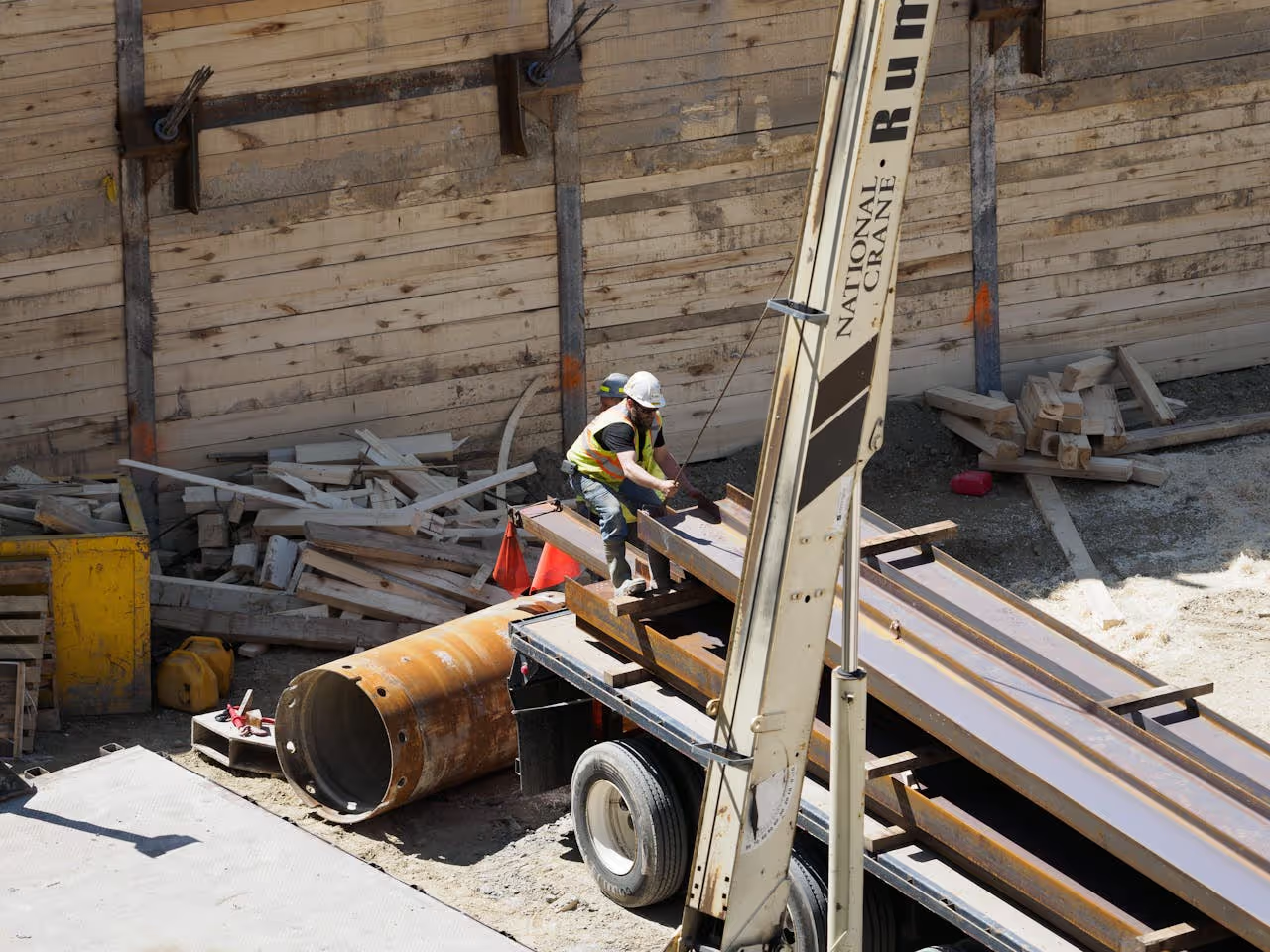
Sacramento warehouses run on a few main racking types, all of which ultimately go through proper warehouse steel recycling Sacramento channels.
Pallet racking is everywhere—those selective systems with uprights and beams. Most use 14-gauge to 10-gauge structural steel depending on load ratings. A typical 24-foot-tall row can weigh 2,000-3,000 pounds of recyclable steel.
Cantilever racks handle longer materials. They're built heavier since arms extend from one side without front column support. More steel means more scrap value, but also trickier removal—another situation where warehouse steel recycling Sacramento comes in.
Industrial shelving systems range from light-duty wire racks to heavy rivet shelving. Still contains recyclable steel, just in smaller amounts.
Mezzanines are a whole different animal. These elevated platforms involve structural engineering and often require permits for removal. Definitely not a DIY project.
Safety components—column protectors, rack guards, end-of-aisle barriers. Adds up faster than you'd think, all contributing to warehouse steel recycling Sacramento totals.
How Sacramento Warehouse Steel Recycling Actually Works
We've streamlined this over the years.
Step 1: Free Assessment
Someone from our crew comes out to your facility. Usually takes 30-40 minutes. We measure the racking, check access points, photograph everything, and estimate tonnage. This initial visit sets the stage for proper warehouse steel recycling Sacramento planning.
You get a clear picture of what removal involves and what your scrap steel is worth. No pressure, no commitment.
Step 2: Scheduling
Here's where we work around your operation. Need us there on a Saturday? No problem. Prefer night shift removal so you don't lose production time? We can do that.
Most Sacramento warehouse projects take 3-5 days from start to finish. Larger facilities might stretch to a week. We'll tell you upfront.
Step 3: Safe Dismantling
Our crews know the drill: top to bottom, reverse installation order.
Wire decking comes off first. Then beams. Finally uprights. Everything gets labeled as it comes down—damaged pieces go to recycling, reusable hardware gets sorted separately.
The safety part isn't just for show. Our people are trained in fall protection, proper load handling, all the OSHA requirements. Because at the end of the day, everyone goes home safe.
Step 4: Documentation and Cleanup
You need records for AB 341 compliance. We provide weight tickets showing exact tonnage removed, disposal certificates, photo documentation—the whole package.
The floor gets swept clean. You'd never know we were there except for all that open space.
The Money Question: What's Your Steel Worth?
Let's talk pricing because everyone wants to know.
Sacramento scrap steel prices right now? Running around $150 per ton for #1 steel scrap [4]. But what you actually get depends on several factors.
Steel grade matters. Clean structural steel from racking commands better prices than painted or contaminated material. We sort on-site to maximize your return.
Volume counts. Obviously, 10 tons of steel is worth more than 1 ton. But volume also affects whether we can offer scrap value that offsets removal costs or if there's a service fee involved.
Access requirements. If we need special equipment, work after hours, or navigate difficult loading situations, that factors into the total cost.
Here's how we handle it: transparent estimates upfront. We separate the scrap value from any service fees so you see exactly what you're getting. No surprises, no hidden charges.
For commercial volumes—and warehouse racking definitely qualifies—we work with you to structure fair pricing that makes sense for your situation.
Quick Case Example
Last month we removed racking from a distribution center near Rancho Cordova. About 8,000 square feet of selective pallet racking, 18 feet tall.
Total steel: roughly 6 tons. They needed weekend removal to avoid disrupting weekday shipping operations. We brought a four-person crew in Saturday morning, had everything down and loaded by Sunday afternoon.
The scrap steel value covered most of the project cost. They got compliance documentation for their records and freed up the entire facility for their new automated storage system.
That's how it should work.
Meeting California's Recycling Requirements
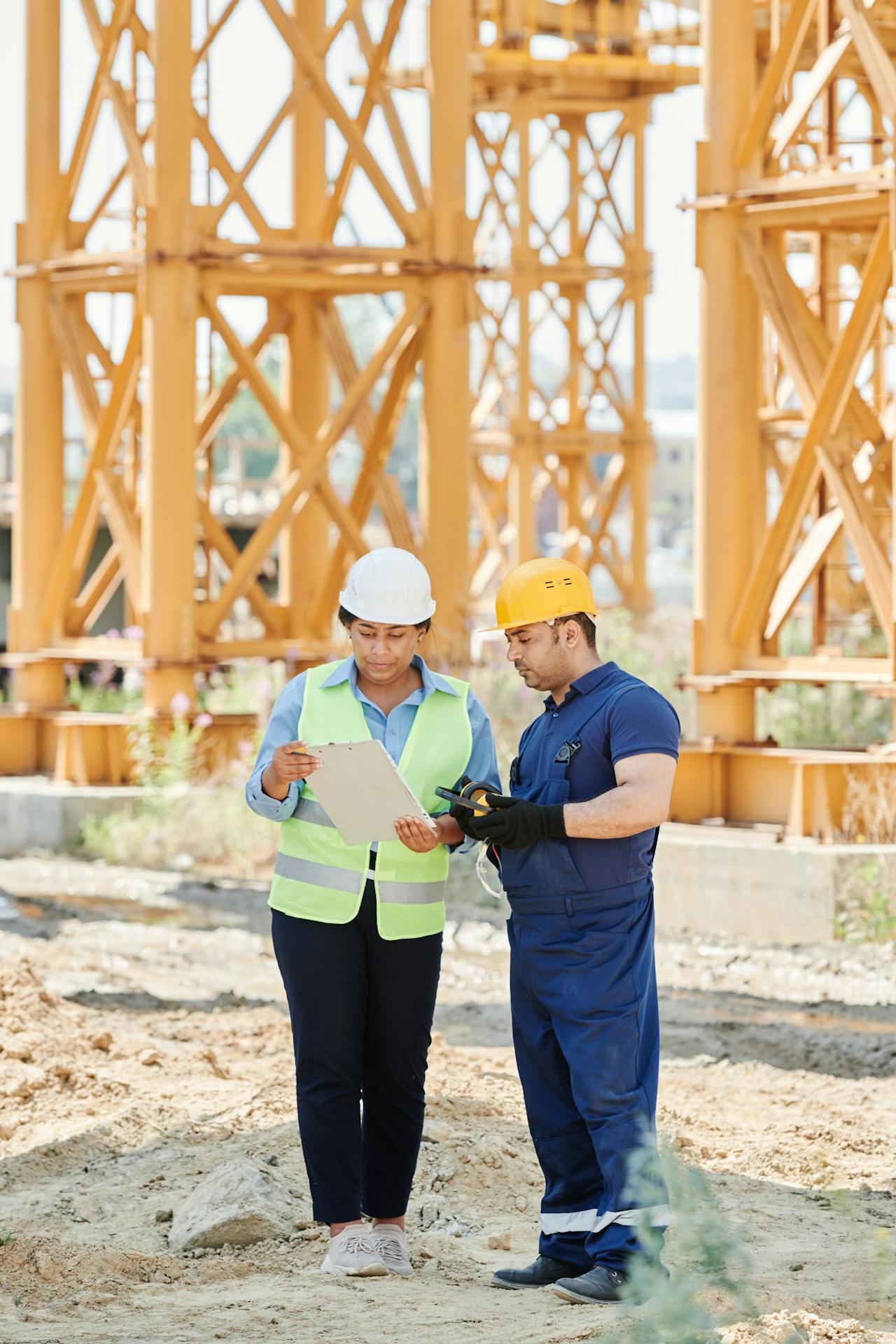
If you're generating four cubic yards or more of waste weekly, AB 341 says you need a recycling program [5]. Warehouse racking absolutely qualifies.
The law exists to reduce greenhouse gas emissions. California's serious about this—they're targeting 75% waste diversion from landfills. Businesses that ignore the requirements can face enforcement action.
Here's the practical part: proper recycling of warehouse steel isn't just about avoiding fines. It's about documentation. When you have records showing professional recycling of your commercial waste, you're protected.
We provide those records automatically. Weight tickets, disposal certificates, dated documentation. Everything you need if CalRecycle ever comes asking.
The Environmental Side (Because It Actually Matters)
Steel recycling saves massive amounts of energy compared to making new steel from raw materials.
How much? Try 74% less energy [6]. Every ton of recycled steel prevents about 1.5 tons of CO2 emissions [7].
It also saves 2,500 pounds of iron ore, 1,400 pounds of coal, and 120 pounds of limestone per ton [8]. Those are real numbers from actual recycling operations.
For Sacramento warehouses tracking carbon footprint or pursuing sustainability certifications, steel recycling provides measurable environmental benefits you can report.
And here's something most people don't know: steel can be recycled infinitely without losing quality. Your old pallet racking could become new structural beams, rebar, or even another warehouse racking system down the line.
Access and Equipment: What We Actually Need
Successful projects need proper access. Your assessment visit identifies everything necessary to carry out warehouse steel recycling Sacramento safely and efficiently.
Loading dock or clear entrance. Our trucks need to get steel out safely. Standard dock height is 48-52 inches but we work with ground-level access too using forklifts.
Space around the racking. OSHA requires clearance for safe work [9]. We need room to maneuver equipment and stack components as they come down.
Power access. 110V outlets for our tools. If your facility doesn't have power where we need it, we bring generators.
Forklift coordination. Some projects need equipment for moving heavy components. If you've got forklifts available, great. If not, we can arrange rentals.
The assessment visit covers all this. We flag any access challenges upfront so there's no surprises when our crew shows up.
Why Sacramento Operations Choose Willis Recycling
We're not the only scrap metal outfit in Sacramento. But there's a difference between companies that just buy scrap and companies that understand commercial operations.
Local Sacramento presence means faster response times. We know Northern California facilities, we understand your space constraints, we're familiar with local regulations.
Transparent process from start to finish. You get clear estimates, regular communication, comprehensive documentation.
Trained crews who know warehouse safety inside and out. OSHA certification isn't optional—it's standard for every person on our team.
Fair treatment on pricing. We're not here to lowball commercial accounts and hope you don't notice. You get honest evaluations that reflect actual scrap value.
Flexibility with scheduling. Warehouses operate 24/7, we get it. We work around your needs, not the other way around.
Common Questions About Warehouse Steel Recycling
Can you handle dismantling or just scrap pickup?
We handle complete dismantling by arrangement. Our crews safely remove racking systems following proper sequences. For projects where you're doing your own dismantling, we can schedule scrap pickup once materials are ready—this includes businesses that already started their warehouse racking removal Sacramento process.
What's the minimum volume for pickup?
We focus on commercial volumes—warehouse racking, industrial shelving, bulk scrap steel from business operations. The exact minimum depends on factors like location and access, but warehouse racking projects typically qualify. Call us for a free assessment if you're unsure.
How quickly can you schedule removal in Sacramento?
Most standard projects get scheduled within the same week you contact us. Larger projects benefit from 1-2 weeks notice so we can line up proper crews and equipment. Emergency removals for facility closures can sometimes be expedited—depends on our current schedule.
What documentation do you provide?
Complete package: weight tickets showing exact tonnage, disposal certificates for compliance, photo documentation. Everything arrives within 24-48 hours after project completion. This covers your AB 341 requirements and gives you records for audits.
Do you work after hours or weekends?
Yes. Many Sacramento warehouses need removal done outside regular operations to avoid disrupting shipping and receiving. We schedule around your needs—nights, weekends, whatever works for your operation. This flexibility is one reason companies recommend us for warehouse racking removal Sacramento needs.
Ready to Reclaim Your Warehouse Space?
Old racking systems aren't getting any lighter or taking up less room while you think about it.
If you're ready to clear that space, we make it straightforward. Free on-site assessment, transparent pricing, professional removal that meets California safety and compliance standards.
Most Sacramento projects wrap up in under a week. You get your facility back, proper documentation for your records, and fair value for your scrap steel.
Contact Willis Recycling to schedule your free assessment. Or send an email to [email protected] with details about your warehouse and what you need removed.
We'll take a look and give you a straight answer about timeline and cost.
Frequently Asked Questions
How much does warehouse racking typically weigh?
Depends entirely on the system. Standard pallet racking uprights run 40-60 pounds per linear foot, beams average 15-25 pounds per foot. A typical 20-foot row that's 24 feet tall contains roughly 2,000-3,000 pounds of steel. Heavier-duty systems like cantilever racks weigh more due to thicker gauges and larger components.
What California regulations apply to warehouse racking removal?
Two main ones: OSHA standards (1910.176) covering safe materials handling and storage, plus California's AB 341 requiring businesses generating 4+ cubic yards of waste weekly to recycle [10]. Warehouse racking qualifies as recyclable commercial waste. Proper removal requires trained crews and documentation proving compliance.
Can damaged or bent racking still be recycled?
Absolutely. Structural damage doesn't affect recyclability—the steel gets melted down completely regardless of condition. Safety-compromised racking that can't be resold should definitely be recycled rather than stored or dumped. Heavy rust, paint, or coatings might slightly impact scrap value since separation is required, but it's all recyclable.
How does steel recycling help with sustainability goals?
Real measurable impact. Every ton of recycled steel saves 2,500 lbs of iron ore, 1,400 lbs of coal, prevents 1.5 tons of CO2 emissions, and uses 74% less energy than making new steel [11]. For warehouses tracking carbon footprint or pursuing green certifications, steel recycling provides documented environmental benefits you can report.
What happens to warehouse racking after pickup?
It goes to a processing facility where steel gets sorted by grade. Components are separated from any non-metal parts like plastic or rubber. Then it's shredded or cut into smaller pieces and melted in electric arc furnaces at around 2,800°F. The purified molten steel gets formed into new products—beams, rebar, sheet metal, even new warehouse racking. Whole cycle can complete in 30 days. Read more about the metal recycling process.
Works Cited
[1] Quality Material Handling Inc. — "Understanding OSHA Requirements for Warehouse Racking." https://www.qmhinc.com/understanding-osha-requirements-for-warehouse-racking/. Published: April 8, 2024. Accessed: November 8, 2025.
[2] San Diego Pallet Racking — "Pallet Racking Removal Services in San Diego." https://sandiegopalletracking.com/pallet-racking-removal/. Published: October 8, 2025. Accessed: November 8, 2025.
[3] San Diego Pallet Racking — "Pallet Racking Removal Services in San Diego." https://sandiegopalletracking.com/pallet-racking-removal/. Published: October 8, 2025. Accessed: November 8, 2025.
[4] ScrapMonster — "Scrap Metal Prices in California." https://www.scrapmonster.com/scrap-yards/prices/california/state/3370. Published: N/A. Accessed: November 8, 2025.
[5] CalRecycle — "Mandatory Commercial Recycling." https://calrecycle.ca.gov/recycle/commercial/. Published: N/A. Accessed: November 8, 2025.
[6] Stealth Monitoring — "The Importance of Steel Recycling for Reducing Carbon Footprint." https://stealthmonitoring.com/news/how-steel-recyclers-contribute-to-lowering-carbon-emissions. Published: June 13, 2025. Accessed: November 8, 2025.
[7] Stealth Monitoring — "The Importance of Steel Recycling for Reducing Carbon Footprint." https://stealthmonitoring.com/news/how-steel-recyclers-contribute-to-lowering-carbon-emissions. Published: June 13, 2025. Accessed: November 8, 2025.
[8] Okon Recycling — "Scrap Steel Recycling: Process, Energy Savings & Economic Impact." https://www.okonrecycling.com/industrial-scrap-metal-recycling/steel-and-aluminum/scrap-steel-recycling/. Published: September 18, 2025. Accessed: November 8, 2025.
[9] OSHA — "1926.250 - General Requirements for Storage." https://www.osha.gov/laws-regs/regulations/standardnumber/1926/1926.250. Published: N/A. Accessed: November 8, 2025.
[10] CalRecycle — "Mandatory Commercial Recycling." https://calrecycle.ca.gov/recycle/commercial/. Published: N/A. Accessed: November 8, 2025.
[11] Okon Recycling — "Scrap Steel Recycling: Process, Energy Savings & Economic Impact." https://www.okonrecycling.com/industrial-scrap-metal-recycling/steel-and-aluminum/scrap-steel-recycling/. Published: September 18, 2025. Accessed: November 8, 2025.
